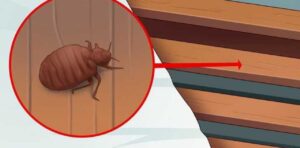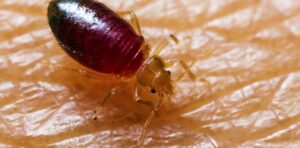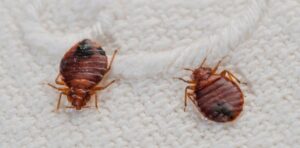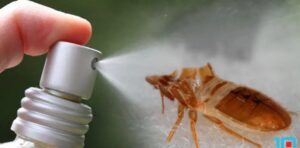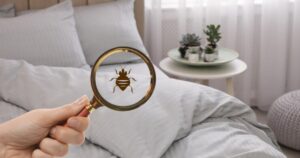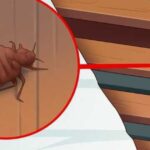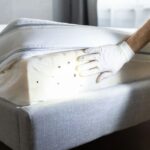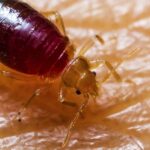Welcome to our informative guide on the topic of bed bugs and foam mattresses. For those seeking a sense of belonging and a safe haven in their homes, it is important to understand the potential risks associated with bed bug infestations. In this article, we will explore the behavior of bed bugs, the characteristics of foam mattresses, and whether or not these pesky insects can thrive in foam.
Additionally, we will discuss the signs of bed bug infestations in foam mattresses, how they can infest these types of bedding, and provide valuable prevention tips. Lastly, we will delve into effective treatment methods and offer additional advice for dealing with bed bugs in your home. Join us as we uncover the truth about bed bugs and foam mattresses.
Key Takeaways
- Bed bugs are attracted to carbon dioxide and body heat emitted by their hosts, making them seek blood meals during the night.
- Foam mattresses are an unlikely habitat for bed bugs due to their dense nature and the lack of suitable hiding spots and breeding grounds.
- Regularly inspecting and cleaning foam mattresses, using mattress protectors, and practicing good hygiene can help prevent bed bug infestations.
- In case of infestation, treatment options such as vacuuming, steam cleaning, insecticide application, heat treatment, and professional pest control should be considered.
Understanding Bed Bug Behavior
Bed bugs commonly exhibit nocturnal behavior, actively seeking out hosts for blood meals during the night. Their feeding habits are well-adapted to this behavior, as they are equipped with specialized mouthparts that pierce the skin and extract blood efficiently. Bed bugs are attracted to the carbon dioxide and body heat emitted by their hosts, making humans an ideal target. Interestingly, bed bugs live in electronics, taking advantage of the cracks and crevices within devices, which makes it crucial to inspect and address potential infestations, even in unexpected places. Once they find a suitable host, bed bugs feed for about 5 to 10 minutes before retreating to a hiding place.
These pests are notorious for their ability to hide in various locations, including cracks and crevices in furniture, mattresses, and box springs. Other common hiding places for bed bugs include behind wallpaper, electrical outlets, and in the seams of curtains or upholstery. It is important to thoroughly inspect these areas when dealing with a bed bug infestation.
Characteristics of Foam Mattresses
Foam mattresses are known for their comfortable and supportive qualities. These mattresses are made using various types of foam, each with its own unique characteristics. Here are four common types of foam used in mattresses:
- Memory Foam: This type of foam molds to the shape of your body, providing excellent pressure relief and support. It also absorbs motion, making it ideal for couples who don’t want to be disturbed by each other’s movements during sleep.
- Latex Foam: Latex foam is known for its durability and resilience. It offers a natural bounce and responsiveness, allowing for easy movement on the mattress. It also provides good airflow and temperature regulation, keeping you cool throughout the night.
- Polyurethane Foam: This is the most common type of foam used in mattresses. It comes in various densities and firmness levels, making it versatile and suitable for different sleep preferences. Polyurethane foam is also known for its affordability.
- Gel Foam: Gel foam is a type of memory foam infused with gel particles. It provides similar benefits to memory foam, such as pressure relief and support, but with enhanced cooling properties. The gel helps to dissipate heat and regulate body temperature, promoting a cooler and more comfortable sleep.
Can Bed Bugs Survive in Foam

Among the various materials used in mattresses, foam has been found to be an unlikely habitat for bed bugs. Bed bug resistant foam, also known as memory foam, is a popular choice for mattresses due to its ability to repel these pests. The structure of foam mattresses prevents bed bugs from finding suitable hiding spots and breeding grounds. The dense nature of foam does not provide the crevices and gaps that bed bugs typically seek for shelter.
Additionally, foam mattresses are less likely to accumulate debris and dirt, making them less attractive to bed bugs. However, it is still important to practice regular foam mattress cleaning to prevent any potential infestations. Vacuuming the mattress regularly and using a mattress protector can help maintain a clean and bed bug-free sleeping environment.
Signs of Bed Bug Infestation in Foam Mattresses
One indication of a possible bed bug infestation in foam mattresses is the presence of small, red bites on the skin. These bites are typically clustered in groups or lines and may cause itching or a rash. Other signs of bed bug infestation in foam mattresses include:
- Dark spots or stains on the mattress: These are fecal matter left by bed bugs and can be found on the surface or in the seams of the mattress.
- Bed bug exoskeletons: As bed bugs mature, they shed their exoskeletons, leaving behind translucent shells.
- Musty odor: A strong, sweet, musty odor may be present, particularly in severe infestations.
- Bed bug eggs: These are tiny, white or cream-colored eggs that are about the size of a pinhead and may be found in the crevices of the mattress.
If you suspect a bed bug infestation in your foam mattress, it is important to take immediate action. Treatment options may include professional pest control services, heat treatment, or the use of insecticides specifically designed for bed bug eradication.
How Bed Bugs Infest Foam Mattresses
Bed bug infestation in foam mattresses can occur through the introduction of bed bugs into the mattress or the migration of bed bugs from surrounding areas. Prevention is key to avoiding such infestations. To prevent bed bugs from entering the foam mattress, it is important to regularly inspect the mattress and the surrounding areas for any signs of infestation. This includes checking for live bugs, bloodstains, or dark spots on the mattress. Additionally, it is crucial to maintain good hygiene and cleanliness in the sleeping area.
Regularly vacuuming the mattress and the surrounding areas can help remove any potential hiding spots for bed bugs. It is also recommended to use mattress encasements or protective covers to create a physical barrier that prevents bed bugs from entering or escaping the mattress. Following these preventive measures and practicing proper foam mattress maintenance can greatly reduce the risk of bed bug infestations.
Prevention Tips for Bed Bug Infestations in Foam Mattresses
To effectively prevent bed bug infestations in foam mattresses, it is essential to implement proactive measures and maintain proper hygiene in the sleeping area. Follow these prevention tips to protect your foam mattress from bed bugs:
- Regularly inspect your mattress: Check for any signs of bed bugs, such as dark spots or small bloodstains on the mattress surface.
- Use mattress encasements: Encase your foam mattress in a bed bug-proof cover to prevent bugs from entering or escaping.
- Vacuum frequently: Use a vacuum with a HEPA filter to remove any bed bugs or eggs that may be hiding in the mattress or surrounding area.
- Practice good hygiene: Wash your bedding, including sheets, pillowcases, and mattress covers, regularly in hot water and dry them on high heat to kill any bed bugs present.
Treating Bed Bug Infestations in Foam Mattresses
When it comes to treating bed bug infestations in foam mattresses, there are several options available. One method is to thoroughly vacuum the mattress, focusing on all the seams and crevices where bed bugs may be hiding. Another option is to use a steam cleaner to kill the bugs and their eggs. Additionally, applying a residual insecticide to the mattress can help in eliminating any remaining bed bugs and preventing future infestations.
Foam Mattress Treatment Options
Foam mattresses with bed bug infestations can be effectively treated using various professional treatment options. Here are four effective methods for treating bed bug infestations in foam mattresses:
- Heat treatment: This involves exposing the mattress to high temperatures that are lethal to bed bugs. Professional exterminators use specialized equipment to heat the mattress to a temperature of around 120°F, which effectively kills all stages of bed bugs, including eggs.
- Insecticide treatment: Professional pest control companies can apply insecticides that are specifically formulated to target and eliminate bed bugs. These treatments may include residual sprays, dusts, or aerosols, which are applied directly to the infested mattress and surrounding areas.
- Vacuuming: Thorough vacuuming can help remove live bed bugs, nymphs, and eggs from the foam mattress. Professional vacuum cleaners with high-efficiency particulate air (HEPA) filters are used to ensure that the captured bed bugs are effectively trapped and disposed of.
- Foam mattress encasements: Encasing the foam mattress with a specially designed bed bug-proof encasement can help prevent further infestations. These encasements are made of tightly woven fabrics that are impermeable to bed bugs, effectively trapping any existing pests inside the encasement and preventing new infestations.
Preventing Future Infestations
In order to prevent future infestations in foam mattresses, effective treatment options for bed bug infestations must be employed. When dealing with bed bugs in foam mattresses, it is crucial to not only eliminate the existing infestation but also to implement long-term prevention measures. Firstly, thorough cleaning of the mattress is essential. Vacuuming the mattress and surrounding areas can help remove any remaining bed bugs, eggs, or fecal matter. Additionally, steam cleaning the mattress can effectively kill bed bugs and their eggs.
Encasing the mattress in a bed bug-proof cover can also prevent re-infestation by trapping any remaining bugs inside and preventing new ones from entering. Regularly inspecting the mattress and surrounding areas, such as bed frames and headboards, can help identify any early signs of infestation. Lastly, maintaining cleanliness and hygiene in the bedroom, including regular laundering of bedding and avoiding clutter, can help deter bed bugs from infesting foam mattresses in the future.
Additional Tips for Dealing With Bed Bugs in Your Home
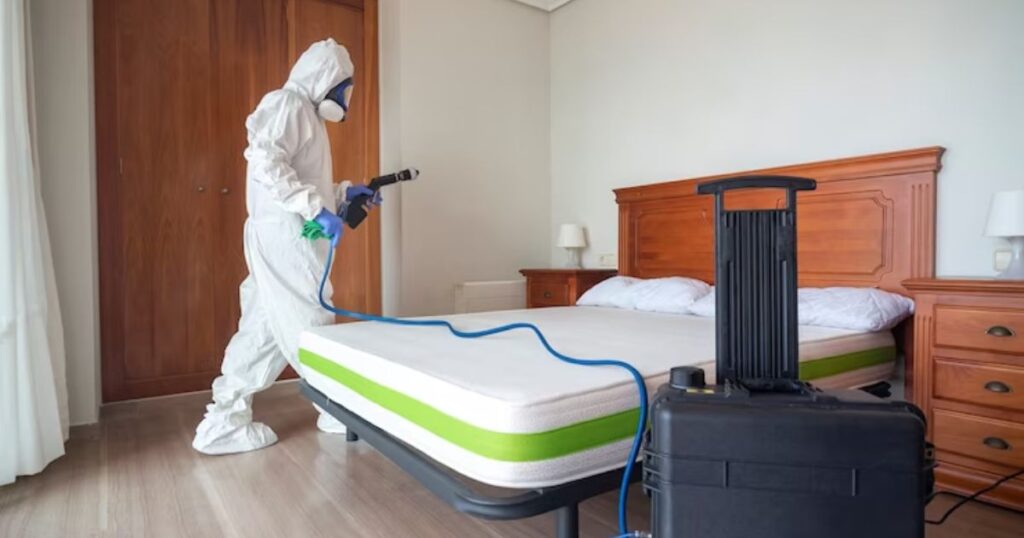
To effectively address a bed bug infestation in your home, it is crucial to implement additional tips that target these resilient pests. Here are four proven strategies for dealing with bed bugs:
- Thoroughly clean and declutter: Start by removing any unnecessary clutter, as it provides hiding spots for bed bugs. Vacuum your home regularly, paying close attention to cracks, crevices, and furniture seams. Dispose of the vacuum bag immediately to prevent bed bugs from escaping.
- Wash and heat-treat infested items: Launder all infested fabrics, including bedding, clothing, and curtains, in hot water (at least 120°F). Dry them on high heat for at least 30 minutes to kill any remaining bed bugs. For non-washable items, use a dryer on high heat or place them in a sealed bag and leave them in direct sunlight.
- Use mattress encasements: Encase your mattress and box spring in specially designed encasements that are bed bug-proof. This will trap any existing bed bugs inside and prevent new ones from infesting your sleeping area.
- Consider professional treatment: If your infestation persists despite your efforts, it may be necessary to seek professional help. Pest control professionals have access to specialized products and techniques that can effectively eliminate bed bugs from your home.
FAQ’s
Do foam mattresses attract bed bugs?
Foam mattresses are not inherently more attractive to bed bugs than other types of mattresses, but bed bugs can infest any mattress if there are hiding spots or cracks present, emphasizing the importance of regular inspections and preventive measures.
What kind of mattress does not get bed bugs?
No mattress is completely immune to bed bugs, but mattresses with sealed seams and smooth surfaces, such as memory foam or latex mattresses, can provide fewer hiding spots, making it more challenging for bed bugs to infest.
Do mattress protectors stop bed bugs?
Mattress protectors can help prevent bed bugs by creating a barrier that makes it difficult for them to infest the mattress, offering an additional layer of protection against these pests.
Conclusion
In conclusion, foam mattresses can indeed provide a cozy hiding place for bed bugs. Their ability to withstand pressure and retain warmth makes them an attractive environment for these pests. It is important to be vigilant and regularly inspect foam mattresses for signs of infestation, such as dark spots or shed skins. Taking preventive measures and promptly treating any infestations can help ensure a bed bug-free sleeping environment.


